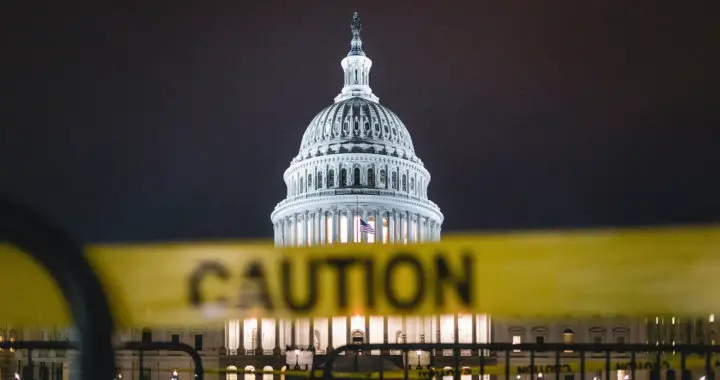Article I Section 8 of the United States Constitution gives the U.S. Congress the sole power to authorize the borrowing of money on the credit of the United States government.
It was in 1917 when the legislative branch of the federal government decided to pass the Second Liberty Bond Act to provide the executive branch with some degree of freedom. The aforesaid law centered on allowing the U.S. Department of Treasury to issue bonds to finance the American participation in the First World War. The same law also has provisions that limited how much debt the Treasury can accumulate.
The passage of the Second Liberty Bond Act fundamentally saw the establishment of a debt ceiling for the first time. It has since become an additional legal basis for rationalizing the authority and responsibility of Congress in determining and overseeing how much the U.S. federal government can borrow from the capital markets.
Other laws that defined further the power of the federal legislative branch include the Public Debt Acts of 1939 and 1941 which expanded and refined the framework for the debt ceiling, and the Budget Control Act of 1974 which introduced the modern form of the limitation and established the process for setting the limit on federal debt. Other miscellaneous acts and resolutions have been passed to adjust the debt ceiling.
The debt ceiling is essentially a statutory limit on the total amount of debt that the U.S. Treasury can issue to fund government operations and financial obligations.
Explaining and Understanding the Pros and Cons of U.S. Debt Ceiling: The Purpose of Limiting How Much the U.S. Government Can Borrow and the Criticisms on this Limitation
Purpose
The federal government of the United States is composed of three main branches. Each has its respective scope of powers and responsibilities provided to them through the U.S. Constitution to ensure that the system for checks and balances is in place.
Understanding the purpose of the debt ceiling rests on the exact principle of checks and balances. This statutory limit grants Congress the power to determine or influence actions and decisions related to fiscal management to keep the spending authorities and responsibilities of the sitting president and his or her entire cabinet and departments.
The power to raise the debt ceiling also allows the legislative branch of the government to negotiate or renegotiate executive orders and decisions of the president or compel another political party to support specific legislative agenda.
Below are the specific purpose and importance or advantages of the U.S. debt ceiling:
1. Fiscal Responsibility And Control: Setting a limit on the amount of debt that the government can accumulate encourages sensible use of public funds and careful consideration of expenses. The debt ceiling serves as a mechanism for promoting fiscal responsibility and controlling government borrowing and spending.
2. Granting Congressional Oversight: Granting Congress power over setting and resetting the debt ceiling grants it further power to oversee and control the borrowing and spending activities of the government. It upholds the “power of the purse” constitutional responsibility of the legislative branch of the government.
3. Negotiating Tool For Fiscal Policy: The debt ceiling has also served as a tool for lawmakers to negotiate desired policy changes and advocate other legislative agendas. The power to set this limit on government borrowing gives the legislative branch considerable leverage over the executive branch.
4. Facilitating Public Accountability: Another important function of the debt ceiling is that it provides some level of indicator regarding government borrowing and spending. Nearing or reaching the limit can be a sign of overspending. This can bring public attention to current financial obligations and fiscal management.
Criticisms
The general advantage of a debt ceiling centers on controlling the spending activities of the government by limiting its borrowing activities. It provides a mechanism for the Congress to oversee the fiscal activities of the executive branch.
However, despite the purpose and importance listed and described above, setting a borrowing limit has faced criticisms due to the numerous instances in which the government has breached the ceiling. Reaching and resetting the limit have also created novel issues that can have serious political and economic repercussions.
Several constitutional experts also believe that imposing a debt ceiling is unconstitutional. Section 4 of the 14th Amendment to the U.S. Constitution states that the validity of the public debt of the government should not be questioned.
Below are the specific issues and criticisms or disadvantages of the U.S. debt ceiling:
1. Political Grandstanding And Political Uncertainty: Several critics have argued that lawmakers have used their power to raise the debt ceiling as an avenue for staging unproductive debates and creating discord within Congress and across the federal government. The resulting standoff creates political uncertainties that can affect public perception and investor confidence.
2. Unaligned With Congress-Approved Budget: Limiting how much debt the U.S. Treasury can issue and incur is also inconsistent with spending decisions made by Congress. The federal legislative branch approves the budget of the federal government. The debt ceiling impedes the borrowing requirements of the executive branch while also impeding its responsibility to implement approved budget decisions.
3. Interferes Fiscal Planning And Decision-Making: Another criticism of the debt ceiling is that debates and differences related to the borrowing limit of the government can lead to a prolonged standoff that can turn into a debt-ceiling crisis. This is a political crisis that disrupts fiscal planning and immediate economic decision-making. The situation can also lead to the shutdown of the entire federal government operations
4. Default Risk And Possible Economic Consequences: The potential for triggering an economic crisis is a serious disadvantage of the debt ceiling. Failure to raise the limit heightens the risk of the U.S. defaulting on its debt obligations because of cash shortage. This can affect its credit rating, increase its borrowing cost, and trigger a financial crisis that can lead to domestic and global economic meltdown.
